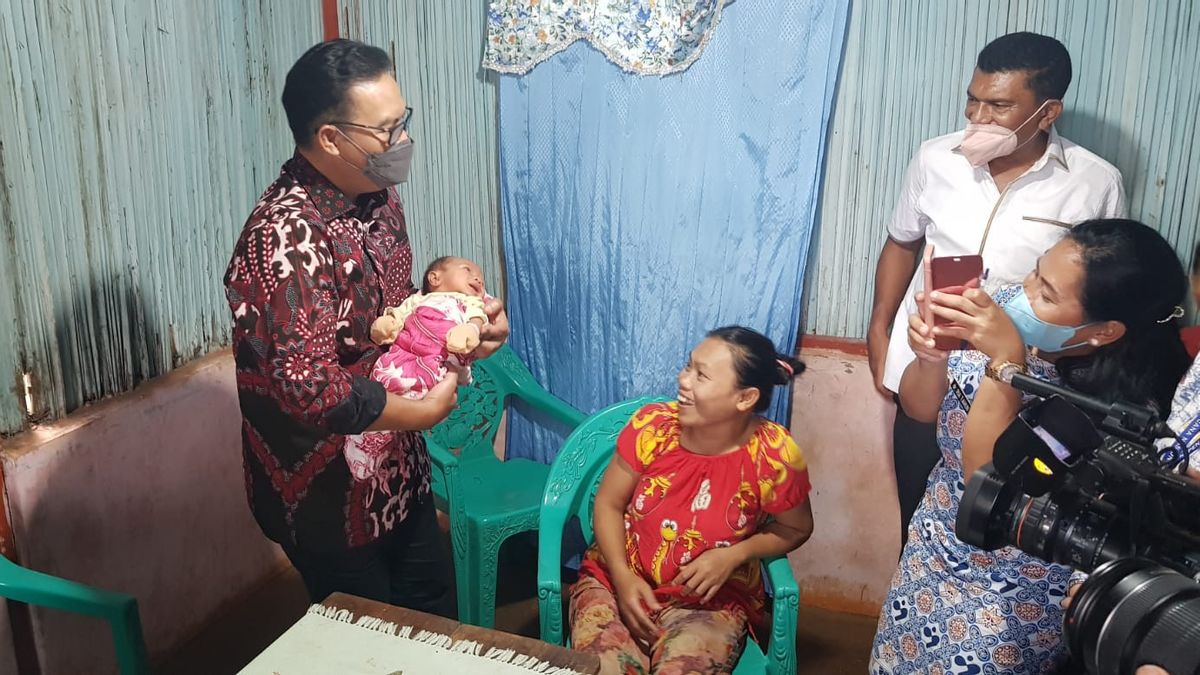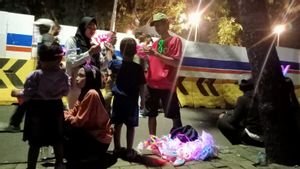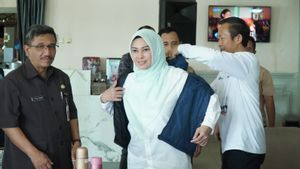NTT - There is always a good morning greeting from school students in Soe, if we pass them in the morning. Friendly with a smile on the faces of these children. They walked down an empty street in Soe, passing through the yard of a house full of vegetables to their respective schools.
If seen with the naked eye, students are often found who have a height that is not in accordance with their age. Soe City, like other areas in Timor Tengah Selatan and Nusa Tenggara Timur districts, has a high prevalence of stunting.
Even the stunting prevalence rate in Timor Tengah Selatan Regency according to the 2021 Indonesian Nutrition Status Study (SSGI) reached 48.3 percent, the highest in East Nusa Tenggara.
The election of South Central Timor in particular and East Nusa Tenggara in general during President Joko Widodo's visit this time showed his full attention to handling the problem of the high stunting rate.
Based on SSGI 2021 data, NTT still has 15 districts in the red category. The red status was assigned based on the prevalence of stunting which was still above 30 percent.
The 15 regencies are South Central Timor, North Central Timor, Alor, Southwest Sumba, East Manggarai, Kupang Regency, Rote Ndao, Belu, West Manggarai, West Sumba, Central Sumba, Sabu Raijua, Manggarai, Lembata and Malacca. Together with South Central Timor, North Central Timor has a prevalence above 46 percent
Meanwhile, the remaining 7 districts and cities have 'yellow' status with a prevalence of 20 to 30 percent, including Ngada, East Sumba, Negekeo, Ende, Sikka, Kupang City and East Flores. In fact, three regions, such as Ngada, East Sumba and Negekeo, are close to red status.
There is not a single area in NTT that has a green status, which has a stunting prevalence of between 10 and 20 percent. Moreover, the status is blue for stunting prevalence below 10 percent.
The stunting prevalence of 48.3 percent in South Central Timor Regency if narrated more or less means that there are 48 stunting toddlers among 100 toddlers in South Central Timor.
Nationally, Timor Tengah Selatan Regency is the number one leader for stunting prevalence among 246 regencies/cities in 12 priority provinces. Even the standards of the World Health Organization or WHO only tolerate the stunting prevalence rate in the range of 20 percent. This means that the prevalence of stunting in South Central Timor exceeds twice the WHO standard.
South Central Timor Regency cannot "fight" alone, it requires collaboration and convergence of all stakeholders including the involvement of all components of society. According to data from the South Central Timor Regency Government, in 2020 there are 37,320 extreme poor people out of a total of 455,410 inhabitants. Meanwhile, the number of households that have proper sanitation only reached 60.04 percent or 69.602 households and this is the cause of the vulnerability of health problems in the community.
"President Joko Widodo's planned working visit to Soe, the capital of South Central Timor Regency on Thursday, March 24, 2022, shows the concern and commitment of the President and the Central Government to alleviating the stunting problem. For President Jokowi, NTT is always in the heart and the BKKBN ensures that the mandate from the President to accelerate stunting reduction remains on the right track," explained Head of the National Population and Family Planning Agency (BKKBN) Hasto Wardoyo in a release received in Jakarta, Tuesday, March 22. .
According to Hasto Wardoyo, who is also the Chief Executive of the National Stunting Reduction Acceleration Team, specifically for South Central Timor Regency, it is hoped that the current prevalence of stunting cases of 48.3 percent can decrease to 43.01 percent by the end of 2022 and slope to 36.22 percent in 2023. So that in 2024 it can reach 29.35 percent.

According to the plan, President Joko Widodo will directly review the programs held by the BKKBN in accelerating stunting reduction in South Central Timor.
Includes health checks for the prospective bride and groom for early detection of stunting potential; examination of pregnant women, weighing and measuring the height of children under five, visits to residents' homes as well as the process of building a house renovation program and the inauguration of a water pump house.

The problem of improving sanitation and the feasibility of healthy homes for residents is one of the programs to accelerate the decline across ministries and agencies coordinated by the BKKBN.
The story of collaborative work together, building mutual concern from all circles in South Central Timor in accelerating stunting reduction will one day be a story that will be remembered by future generations. A story about the struggle to create a golden generation.
The English, Chinese, Japanese, Arabic, and French versions are automatically generated by the AI. So there may still be inaccuracies in translating, please always see Indonesian as our main language. (system supported by DigitalSiber.id)










